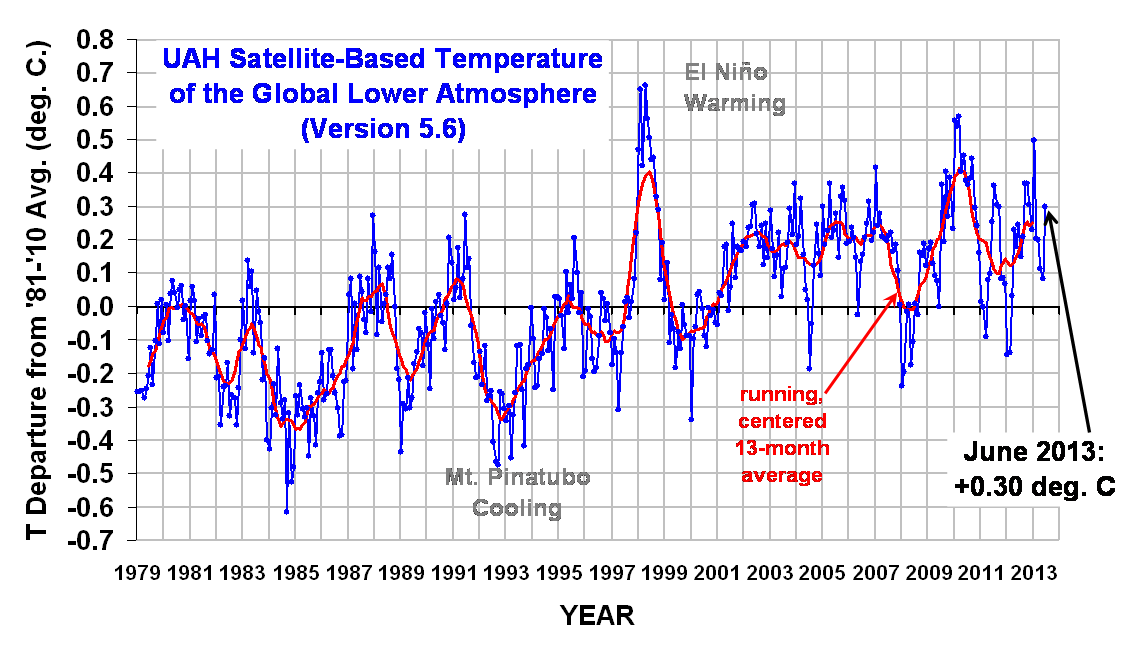After 10 days in Michigan’s U.P. for my 40th high school reunion, here’s the belated monthly global temperature update.
We added two satellites to the processing, Metop-A starting in 2007 and NOAA-19 starting in 2009. The resulting anomalies, which we will call Version 5.6, differ by as much as 0.04 deg. C from v5.5. You can read the details of the new processing here.
We are now making good progress on Version 6.0, which includes a variety of improvements in our processing procedures which have taken much more time than we anticipated.
The Version 5.6 global average lower tropospheric temperature (LT) anomaly for June, 2013 is +0.30 deg. C (click for large version):

The global, hemispheric, and tropical LT anomalies from the 30-year (1981-2010) average for the last 18 months are:
YR MON GLOBAL NH SH TROPICS
2012 1 -0.145 -0.088 -0.203 -0.245
2012 2 -0.140 -0.016 -0.263 -0.326
2012 3 +0.033 +0.064 +0.002 -0.238
2012 4 +0.230 +0.346 +0.114 -0.251
2012 5 +0.178 +0.338 +0.018 -0.102
2012 6 +0.244 +0.378 +0.111 -0.016
2012 7 +0.149 +0.263 +0.035 +0.146
2012 8 +0.210 +0.195 +0.225 +0.069
2012 9 +0.369 +0.376 +0.361 +0.174
2012 10 +0.367 +0.326 +0.409 +0.155
2012 11 +0.305 +0.319 +0.292 +0.209
2012 12 +0.229 +0.153 +0.305 +0.199
2013 1 +0.497 +0.512 +0.481 +0.387
2013 2 +0.203 +0.372 +0.034 +0.195
2013 3 +0.200 +0.333 +0.068 +0.243
2013 4 +0.114 +0.128 +0.101 +0.165
2013 5 +0.083 +0.180 -0.015 +0.112
2013 6 +0.298 +0.337 +0.259 +0.221

 Home/Blog
Home/Blog



